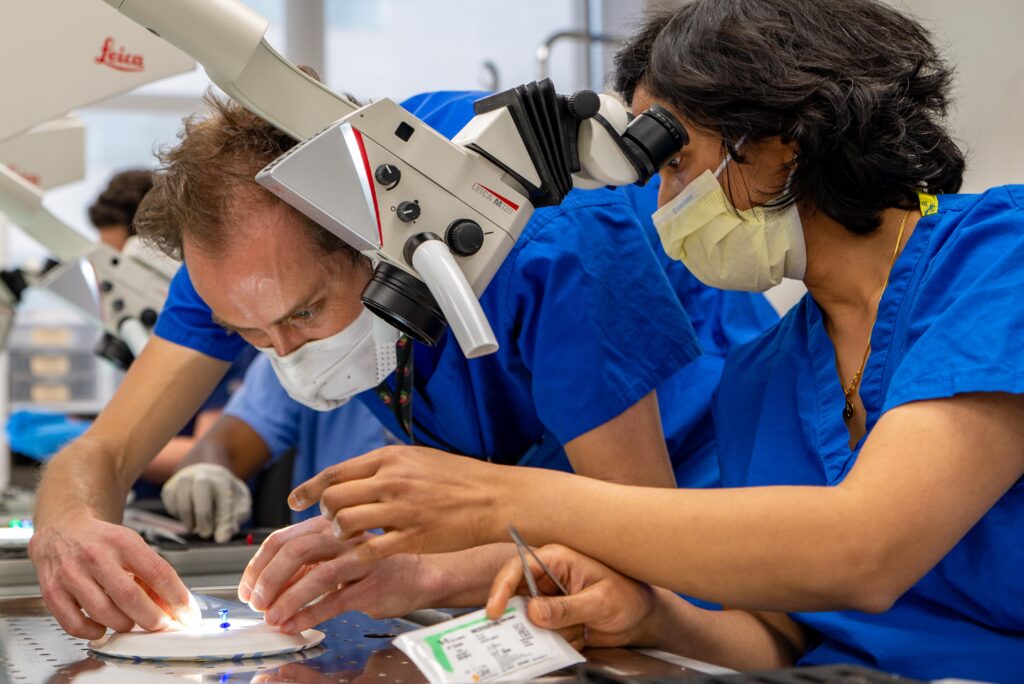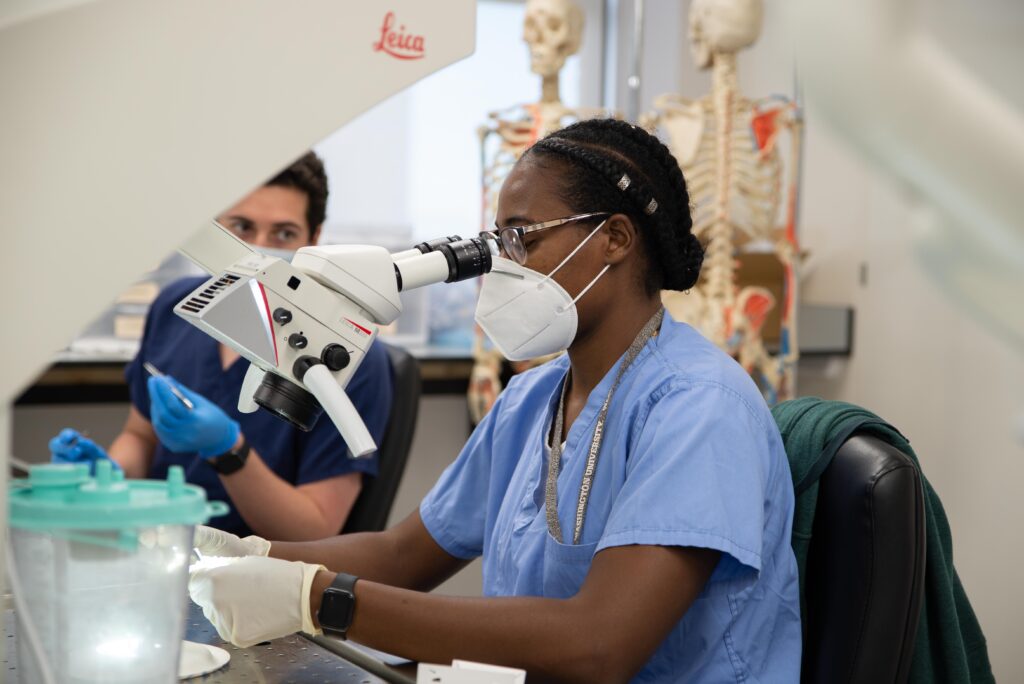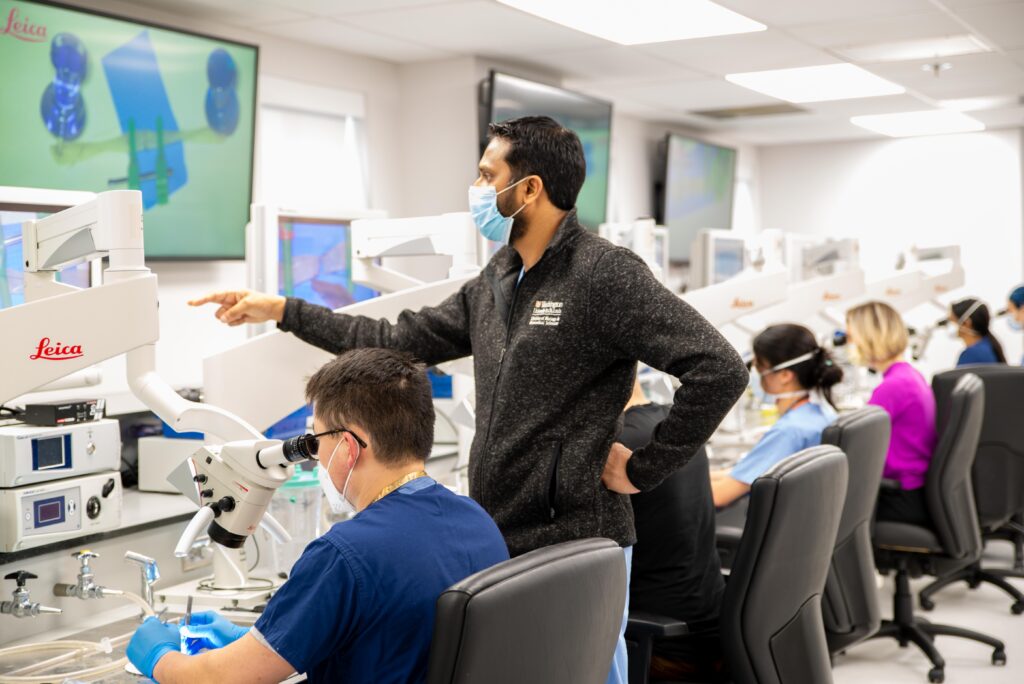A group of otolaryngology residents recently got to try their hands at reconstructing blood vessels, also known as microvascular anastomosis, in the surgical simulation lab. Reconnecting cut or severed blood vessels is one of the most challenging surgical skills to acquire — the repaired vessel has to remain patent (open), but not leak.

The course was hosted by otolaryngology faculty members Patrik Pipkorn, MD, and Sid Puram, MD, PhD, and Synovis Micro representative Shad Huncker. Head and neck fellow Burton Wood, MD, provided live expert demonstration for trainees to watch on the simulation lab big screen monitors.
“Microvascular surgery is a completely different skill set compared to conventional surgery,” said Dr. Pipkorn. “Most people think if they master suturing in regular surgery, the same set of skills can be applied under the microscope. Unfortunately, this is far from true. The only way to learn and improve on these skills is with lots of practice.”
“We are very fortunate to have a fully equipped lab where we could practice this with the residents,” he added. “The instruments provided were also top quality, which made the experience very favorable for everyone involved.”
…the first time you sit down to micro is a
Sid Puram, MD, PhD
bit like drinking from a fire hose.
Co-host Dr. Puram agreed.
“As a resident, I did not get much of a chance to build these skills outside of the operating room,” he said. As a result, the first time you sit down to micro is a bit like drinking from a fire hose. The earlier we can introduce these techniques, the more likely it is that residents will feel more at ease when they assist us.”
The turnout for this voluntary event on a Wednesday evening indicated a strong sense of dedication shared by both faculty and residents. Residents were so pleased with the course they have asked for a second session in the Fall.

“The micro session was an excellent way to familiarize myself with the tools and techniques involved in microsurgery,” said Will Strober, MD. “As a junior resident, I do not often get to practice with these tools in the operating room so it was extremely valuable to be able to spend this time in the sim lab.”
Second year resident David Lee, MD, agreed the no risk learning environment is essential.
“It was great to work under the microscope with 8-0 and 9-0 suture,” he said. “You don’t really get a scale for how fine the movements are until you struggle with basic things like picking up suture and tying square knots.”
